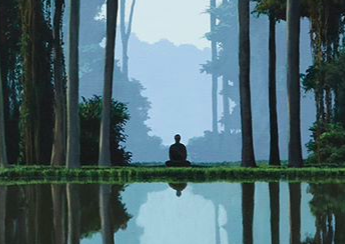20th c. & Contemporary Art Day Sale, Morning Session
New York Auction 2 July 2020
101
Anne Truitt
Parva XIII
Estimate $20,000 - 30,000
Sold for $93,750
Create your first list.
Select an existing list or create a new list to share and manage lots you follow.
102
Ed Moses
Untitled
Estimate $15,000 - 20,000
Sold for $16,250
Create your first list.
Select an existing list or create a new list to share and manage lots you follow.
103
James Turrell
Hologram (IV 01)
Estimate $30,000 - 50,000
Sold for $50,000
Create your first list.
Select an existing list or create a new list to share and manage lots you follow.
104
Lee Bontecou
Untitled
Estimate $60,000 - 80,000
Sold for $105,000
Create your first list.
Select an existing list or create a new list to share and manage lots you follow.
105
Ad Reinhardt
Untitled
Estimate $100,000 - 150,000
Create your first list.
Select an existing list or create a new list to share and manage lots you follow.
106
Mark Tobey
Untitled
Estimate $15,000 - 20,000
Create your first list.
Select an existing list or create a new list to share and manage lots you follow.
107
Hans Hofmann
Yellow Glow
Estimate $25,000 - 35,000
Create your first list.
Select an existing list or create a new list to share and manage lots you follow.
108
Joan Mitchell
Untitled
Estimate $80,000 - 120,000
Sold for $102,500
Create your first list.
Select an existing list or create a new list to share and manage lots you follow.
109
Robert Motherwell
Untitled
Estimate $20,000 - 30,000
Sold for $23,750
Create your first list.
Select an existing list or create a new list to share and manage lots you follow.
110
Helen Frankenthaler
1973 (Thanksgiving Day)
Estimate $15,000 - 20,000
Sold for $47,500
Create your first list.
Select an existing list or create a new list to share and manage lots you follow.
111
Ed Clark
Untitled
Estimate $20,000 - 30,000
Sold for $47,500
Create your first list.
Select an existing list or create a new list to share and manage lots you follow.
112
Ed Clark
Untitled
Estimate $20,000 - 30,000
Sold for $47,500
Create your first list.
Select an existing list or create a new list to share and manage lots you follow.
113
Mary Corse
Untitled (Black White Inner Band, Beveled)
Estimate $220,000 - 280,000
Sold for $250,000
Create your first list.
Select an existing list or create a new list to share and manage lots you follow.
114
Tony Smith
Spitball
Estimate $50,000 - 70,000
Create your first list.
Select an existing list or create a new list to share and manage lots you follow.
115
Robert Ryman
Bent Line Drawing 20" x 20"
Estimate $50,000 - 70,000
Sold for $56,250
Create your first list.
Select an existing list or create a new list to share and manage lots you follow.
116
Kenneth Noland
Resect
Estimate $200,000 - 300,000
Create your first list.
Select an existing list or create a new list to share and manage lots you follow.
117
Carlos Cruz-Diez
Chromointerférence Mécanique
Estimate $80,000 - 100,000
Sold for $90,000
Create your first list.
Select an existing list or create a new list to share and manage lots you follow.
118
Yayoi Kusama
Flower
Estimate $18,000 - 22,000
Sold for $20,000
Create your first list.
Select an existing list or create a new list to share and manage lots you follow.
119
Robert Morris
Untitled (Hypnerotomachia Series)
Estimate $18,000 - 22,000
Sold for $68,750
Create your first list.
Select an existing list or create a new list to share and manage lots you follow.
120
Louise Nevelson
Young Tree XXIV
Estimate $30,000 - 50,000
Sold for $110,000
Create your first list.
Select an existing list or create a new list to share and manage lots you follow.
121
George Rickey
Broken Line (Two Lines Horizontal)
Estimate $40,000 - 60,000
Sold for $40,000
Create your first list.
Select an existing list or create a new list to share and manage lots you follow.
122
John Chamberlain
Untitled
Estimate $12,000 - 18,000
Sold for $15,000
Create your first list.
Select an existing list or create a new list to share and manage lots you follow.
123
Lucas Samaras
Chair with Reclining Curvaceous V
Estimate $70,000 - 100,000
Create your first list.
Select an existing list or create a new list to share and manage lots you follow.
124
Deborah Butterfield
Chestnut
Estimate $80,000 - 120,000
Create your first list.
Select an existing list or create a new list to share and manage lots you follow.
125
Julian Schnabel
Insomnolent Brown Trimmed in Mink
Estimate $120,000 - 180,000
Sold for $250,000
Create your first list.
Select an existing list or create a new list to share and manage lots you follow.
126
Julian Schnabel
Lazarus, Second Painting for Aldo Moro
Estimate $100,000 - 150,000
Sold for $435,000
Create your first list.
Select an existing list or create a new list to share and manage lots you follow.
127
Mary Heilmann
Lil Totem
Estimate $50,000 - 70,000
Sold for $137,500
Create your first list.
Select an existing list or create a new list to share and manage lots you follow.
128
This lot is no longer available.
129
Philip Guston
Untitled (double-sided drawing)
Estimate $40,000 - 60,000
Create your first list.
Select an existing list or create a new list to share and manage lots you follow.
130
Jack Tworkov
Torso
Estimate $10,000 - 15,000
Sold for $9,375
Create your first list.
Select an existing list or create a new list to share and manage lots you follow.
131
André Breton
Four works: (i-iv) Untitled
Estimate $15,000 - 20,000
Sold for $16,250
Create your first list.
Select an existing list or create a new list to share and manage lots you follow.
132
Joseph Cornell
Sandsifter Box
Estimate $180,000 - 250,000
Create your first list.
Select an existing list or create a new list to share and manage lots you follow.
133
Fernand Léger
Untitled Composition
Estimate $18,000 - 22,000
Sold for $28,750
Create your first list.
Select an existing list or create a new list to share and manage lots you follow.
134
Jacques Lipchitz
Study for Pastorale
Estimate $12,000 - 18,000
Create your first list.
Select an existing list or create a new list to share and manage lots you follow.
135
Henri Laurens
Femme couchée
Estimate $20,000 - 30,000
Create your first list.
Select an existing list or create a new list to share and manage lots you follow.
136
Henri Laurens
La jeune soeur
Estimate $80,000 - 120,000
Create your first list.
Select an existing list or create a new list to share and manage lots you follow.
137
Fernando Botero
Woman with Serpent
Estimate $200,000 - 250,000
Create your first list.
Select an existing list or create a new list to share and manage lots you follow.
138
Fernando Botero
Danseuse équilibriste à cheval
Estimate $35,000 - 50,000
Sold for $37,500
Create your first list.
Select an existing list or create a new list to share and manage lots you follow.
139
Wifredo Lam
Untitled
Estimate $120,000 - 180,000
Sold for $150,000
Create your first list.
Select an existing list or create a new list to share and manage lots you follow.
140
Loló Soldevilla
Sin Título
Estimate $30,000 - 40,000
Sold for $52,500
Create your first list.
Select an existing list or create a new list to share and manage lots you follow.
141
José Gurvich
Untitled
Estimate $25,000 - 35,000
Sold for $77,500
Create your first list.
Select an existing list or create a new list to share and manage lots you follow.
142
Tomás Sánchez
Meditador
Estimate $250,000 - 350,000
Sold for $399,000
Create your first list.
Select an existing list or create a new list to share and manage lots you follow.
143
Gerhard Richter
Onkel Rudi
Estimate $18,000 - 22,000
Sold for $21,250
Create your first list.
Select an existing list or create a new list to share and manage lots you follow.
144
Anselm Kiefer
Lilith
Estimate $70,000 - 100,000
Sold for $68,750
Create your first list.
Select an existing list or create a new list to share and manage lots you follow.
145
Kenny Scharf
Coconut Star
Estimate $25,000 - 35,000
Sold for $50,000
Create your first list.
Select an existing list or create a new list to share and manage lots you follow.
146
Kenny Scharf
Spacemeats
Estimate $45,000 - 55,000
Sold for $81,250
Create your first list.
Select an existing list or create a new list to share and manage lots you follow.
147
Jim Dine
2 Moons
Estimate $80,000 - 120,000
Sold for $81,250
Create your first list.
Select an existing list or create a new list to share and manage lots you follow.
148
Alighiero Boetti
Entre loup et chien
Estimate $20,000 - 30,000
Sold for $30,000
Create your first list.
Select an existing list or create a new list to share and manage lots you follow.
149
Tom Wesselmann
Study for Face Aquatint
Estimate $25,000 - 35,000
Sold for $22,500
Create your first list.
Select an existing list or create a new list to share and manage lots you follow.
150
Richard Pettibone
Andy Warhol, Marlon, 1963
Estimate $30,000 - 50,000
Sold for $37,500
Create your first list.
Select an existing list or create a new list to share and manage lots you follow.
151
Ed Ruscha
S
Estimate $15,000 - 20,000
Sold for $27,500
Create your first list.
Select an existing list or create a new list to share and manage lots you follow.
152
Richard Artschwager
Pull
Estimate $25,000 - 35,000
Create your first list.
Select an existing list or create a new list to share and manage lots you follow.
153
Al Held
Untitled
Estimate $10,000 - 15,000
Sold for $21,250
Create your first list.
Select an existing list or create a new list to share and manage lots you follow.
154
Ralph Humphrey
Station
Estimate $20,000 - 30,000
Sold for $22,500
Create your first list.
Select an existing list or create a new list to share and manage lots you follow.
155
Larry Poons
Untitled
Estimate $20,000 - 30,000
Sold for $200,000
Create your first list.
Select an existing list or create a new list to share and manage lots you follow.
156
Paul Jenkins
Phenomena Forecast of Fire
Estimate $25,000 - 35,000
Sold for $75,000
Create your first list.
Select an existing list or create a new list to share and manage lots you follow.
157
Patrick Hughes
Stairs to the Stars
Estimate $40,000 - 60,000
Sold for $112,500
Create your first list.
Select an existing list or create a new list to share and manage lots you follow.


